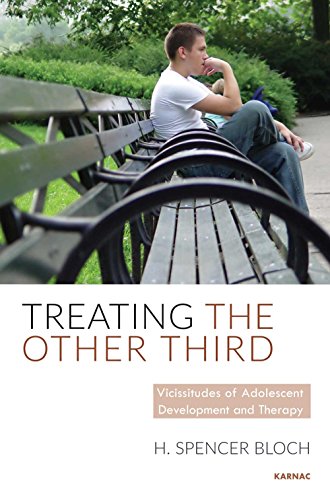Treating The Other Third: Vicissitudes of Adolescent Development and Therapy

Book Details
- Publisher : Routledge
- Published : 2015
- Cover : Paperback
- Pages : 304
- Category :
Child and Adolescent Studies - Catalogue No : 36254
- ISBN 13 : 9781782202196
- ISBN 10 : 1782202196
Reviews and Endorsements
‘Treating the Other Third might better be titled, “All you need to know that the literature on psychoanalytic psychotherapy doesn’t tell you.” This book is solidly about “treatment”rather than the more limited scope suggested by the section headings, “treatment of severe psychopathology” or “unique outcomes of development.” Read this book and you will be on the edge of your seat as you experience the meticulously researched, yet always provocative, points of view H. Spencer Bloch chooses to explore, always in great depth. Indeed, Dr. Bloch is a masterful clinician and incisive thinker. He understands patients in a way that only a clinician who has devoted years to practice can. As you read, pay close attention to his unique uses of the terms “developmental,” “sponsorship,” and “survivor guilt,” and you will find yourself among the initiated.’
— Steven Frankel, MD, Associate Clinical Professor, University of California, San Francisco; Director, Center for Collaborative Psychiatry, Psychology and Medicine
‘What a refreshing treat to sit by the feet of a seasoned psychodynamic professional such as H. Spencer Bloch. With manualized therapies and biomedical treatments having their day, it is not easy to find wise clinicians who have been in the trenches treating real patients every day for many years, for more than, say, twelve sessions each. In this book, Dr. Bloch takes us on an impassioned journey to an experience-near understanding of adolescents and their developmental needs and vulnerabilities. Although I disagree with his assertions about homosexuality and social issues, and found them overgeneralized, he is thought-provoking. But when he discusses cases he shines, telling the reader in plain language (while utilizing sophisticated concepts) what to do and how to do it with adolescent patients and their parents. His clinical vignettes are compelling and real, and by the end he has made his points clear, giving the reader a master’s recommendations on both a therapeutic stance as well as a framework to navigate the choppy waters of adolescent treatment and development. His commitment to and “ownership” of patients is inspiring, conveying the power of “being with” adolescents and “having their back.” All in all, this is a book that will stay with the reader and one to go back to for more over time.‘
— David L. Kaye, MD, Professor of Psychiatry, Vice Chair for Academic Affairs (Psychiatry), Medical Director, CAP PC, University at Buffalo School of Medicine, NY

